Blood Secrets: Chronicles of a Crime Scene Reconstructionist Read online
Page 14
Another pattern that often misleads crime scene investigations is expirated blood—blood that an injured person has exhaled or coughed out. (Some books on blood pattern analysis mention sneezing as a third source of expirated blood, though in more than forty years of crime scene investigation, I have never seen an injured person sneeze out blood.) It can come out through the mouth, nose, or even through severe wounds in the lungs or trachea. It produces a mist very similar to the type a gunshot wound creates. However, the tails of each droplet are blunt, the blood has air bubbles in it, and the pattern it makes is chaotic and random, as if the blood droplets have been spinning through the air in every direction. Gunshot spatter, on the other hand, produces a neat arc or fan of minuscule blood droplets with the sharply narrowed spines of each pointing in the same direction. With experience, you learn to recognize the distinctive little round circles and voids in the blood and to look for mucous strands to confirm that blood was expirated. You can vet your theory by asking a crime lab to test a sample of the blood to see whether there is saliva in it.
I was asked to consult on an interesting case in Yonkers, New York, in the 1990s involving a woman whose husband was released from the penitentiary and then headed straight home to murder her. The man stabbed his wife in the back with a butcher knife, and she died while struggling to get out the front door of her apartment. The positioning of the body and the multitude of bloody hand transfers smeared along the inside of the door frame testified to that. But the DA’s office asked me to explain what the rest of the blood spatter meant. There was an abundance of high-velocity mist on the door. Didn’t that suggest that the man had shot her in addition to stabbing her? If so, why had the autopsy found no gunshot wound? Fortunately, I knew enough about expirated blood by that point to recognize the turbulent, irregular patterning it creates and to look for telltale mucous strands to confirm my suspicion. The knife pierced the woman’s lungs, and in her frantic struggle to escape she was breathing hard, almost panting in her last few minutes of life—exhaling blood all over the door and the wall near it.
It was just one of many cases I’ve worked on where high-velocity mist could mislead investigators as easily as it could lead them to the truth. Here’s another.
Case Study: Suspicious Circumstances
There was no question that Tyler Opperman was dead. The question was how he got that way. His wife, Casey, twenty-seven, swore she had been in the bathtub of their home in Cincinnati, Iowa, at around three o’clock in the morning on January 27, 2008, when she heard a thump in the bedroom outside the bathroom door. She called to Tyler to ask him what had made the noise. When she got no answer, she went to see for herself. There was her twenty-three-year-old husband, lying at the foot of the bed, blood leaking out of his head, still holding the .22-caliber rifle he had just used to commit suicide.
Tyler Opperman’s family was hardly the first to have trouble believing that someone they loved had killed himself, though they had more reason for skepticism than many other grief-stricken families—namely, the fact that Casey’s first husband, twenty-eight-year-old Brad Tuttle, had also killed himself with a single gunshot wound to the head two years earlier in nearby Green City, Missouri. It didn’t help that Opperman’s new widow wasn’t exactly the sympathetic girl-next-door type, by many accounts. In fact, on the night Tyler Opperman died, Casey fractured her nose in a bar fight with another woman and the couple spent some of their last hours together at the emergency room.
The police and the crime lab couldn’t reach a unanimous decision about the cause of death, partly because of the puzzling blood patterns in the couple’s bedroom. Opperman’s was the only DNA on the gun, and his blood alcohol level was too low to suggest he might have been unconscious when he died. But blood spatter had ended up around the corner of a nightstand. How? Why were Opperman’s socks and the floor near his body speckled with what looked like back spatter? What did the voids and pooled blood underneath him mean? And how had he gotten blood transfer stains onto his clothing? Had someone moved his body? Did it suggest an angle of impact that no suicide could manage?
Sheriff Gary Anderson called me. I flew to Iowa and scrutinized the crime scene photos from the minuscule one-story blue cottage where the death occurred. The high-velocity spatter was tricky, but ultimately it all pointed to one inevitable explanation, based on my knowledge of blood patterns: Tyler Opperman sat on the edge of his bed, placed the rifle between his legs, pointing it upward and pinching it between his knees to steady it, then put the end inside his mouth before pulling the trigger.
How could we be sure?
First, the powder deposits and blood stippling on the roof of the dead man’s mouth provided concrete evidence that there had been intraoral contact with the end of the barrel.
Second, the distinctive blood spatter on the victim’s clothing gave us enough solid data to re-create his position accurately. The inside of Opperman’s right sock and pant leg were blood-spattered. So were the outside of his left sock and pant leg. Yet there were blood-free voids on the inside of the left sock and pant leg as well as on the outside of the right ones. This told us that after the .22 discharged, Opperman’s head and torso slumped to the left, beyond his left leg and over the edge of the bed. His body remained upright for a number of seconds—blood dripping from his mouth and nose onto his clothing and the floor nearby—until the force of gravity finally caused him to fall and make the thump that his wife heard. (Strange as it might sound, it’s not uncommon for a seated gunshot victim to remain upright temporarily as Opperman did.)
During the moments that Opperman’s body stayed perched on the bed with his head hanging forward, his blood dripped enough to create a blood-into-blood pattern with satellite spatter on the floor that could easily be mistaken for back spatter pointing away from him. Finally, as he fell he brushed the edge of the swivel nightstand, which spun around so that the spattered side was facing away from him. He fell into his own wet blood and smeared some of it onto his clothing, creating the puzzling transfer stains and explaining how so much blood ended up underneath his body.
We calculated the angle of impact based on Opperman’s wound and the blood spatter as well as on the position his body was found in, then we compared this with the dimensions of the tiny bedroom. There simply wasn’t enough room for his wife to have shot him. She would have had to sit on the floor with her feet under the bed between her husband and the TV stand, and he would have had to allow her to place the end of the rifle in his mouth. Suspicious circumstances notwithstanding, murder would have been physically impossible in the Opperman case.
Casey Opperman soon moved out of state and married for a third time. Did Tyler mimic her first husband’s method of suicide in an attempt to incriminate her as some people have suggested? Did Casey play an active role in her husband’s death as others suspected? I have certainly handled cases where one person literally talked another into killing himself. Then again, I have investigated crimes where someone took drastic, tragic actions for the sole purpose of ruining someone else’s life. But the blood evidence in the Opperman case told me nothing about the dynamics of their relationship, and I never speculate. Conjecture has no place in crime scene reconstruction.
Web of Lies?
It’s not uncommon for people who stumble upon dead bodies to try to find out if the victims might still be alive. They check for a pulse, turn a victim over, shake him, try to resuscitate him, or come in contact with wet blood through any number of other innocent, well-intentioned actions. In most cases they panic, particularly if they know the victim. They might not even realize that they’ve transferred blood to their own clothing until a police officer points it out. Unfortunately, murderers know this. And, like Hartmann and Greineder, they have an annoying habit of trying to explain away the bloodstains on their clothes by claiming they were the proverbial innocent bystander “trying to help” the victim.
One of the most accurate ways to find out whether such transfers are inadvertent
or incriminating is to do a microscopic examination of the fabric. Blood coating only the top layer suggests that the person brushed against wet blood accidentally. However, minuscule droplets of blood spatter embedded more deeply in the fabric’s fibers suggest the person wearing the clothing was either the assailant or stood nearby while an attack causing medium-or high-velocity spatter occurred.
Taking this one step further, crime scene reconstructionists would use the position of the blood spatter on the clothing to determine whether it suggests guilt or innocence. The Sandra Anne Duyst murder is a prime example: Not only did an examination of her husband’s clothing reveal high-velocity blood spatter, but it showed spatter concentrated behind the right sleeve—precisely where blowback would hit a shooter extending his arm as he pulled the trigger.
Bullet and Wound Trajectories
Firearms are responsible for close to three-quarters of the murders in the United States. They accounted for 68 percent of them in 2006, the most recent year for which the National Institute of Justice has data. They are also the weapon of choice in more than half of the suicides—just over 52 percent, based on 2005 data from the National Center for Health Statistics. So it’s not surprising that high-velocity blood spatter interpretation plays a central role in crime scene reconstruction in America today. But it’s only one piece of the puzzle.
Understanding trajectory (the flight path a moving object takes through space) is equally important. Crime scene reconstructionists work backward from the blood spatter through the victim’s wounds and the position of his body to determine the course the bullet or bullets took through the air. Mapping out the bullet’s path tells you the shooter’s position and distance from the victim, approximate height, right-or left-handedness, whether he or she was stationary or moving when the shots were fired, and more.
Ballistics experts can also piece together what make of gun and type of bullet were used based on shell casings, spent bullets, and bullet fragments. Was more than one gun used? Was the gun a type that leaves residue on a shooter’s skin or clothes? If so, detectives will swab any suspects they bring in and lab test their clothing for traces of it. A fired bullet is almost like a license plate—it reveals the distinctive grooves, lands (flat, high points), and other unique markings of the gun that fired it. No two guns create the same markings.
When there is a gun in evidence, experts can use chemicals to reconstruct a serial number that has been ground or filed off. This can then be entered into a state or national database to find out whom it’s registered to and whether it has been used in other recent crimes.
Case Study: Ghosts of the Civil War
In 1989, I got a chance to put my knowledge of trajectory to use to help unlock lingering mysteries in a crime that took place almost 150 years ago.
On the morning of July 3, 1863, twenty-year-old Gettysburg resident Mary Virginia Wade rose early and started kneading dough for bread and biscuits she planned to hand out to hungry Union soldiers, as she and her mother had done the previous day. The family had taken shelter at the house of Wade’s sister Georgia, who gave birth an hour before Confederate troops rode into town on the first day of what would become the Civil War’s most famous battle. Jennie Wade (or Ginnie Wade, according to some sources) and her family hoped the little brick house would provide a safer haven than their own, which was several blocks away. Instead they found themselves caught in a no-man’s-land between Northern and Southern sharpshooters.
More than 150 shots hit the façade of the Baltimore Street house before one fatal bullet penetrated the exterior side door. It pierced the interior kitchen door next and then struck Wade in the back under her left shoulder blade. She died instantly, earning the dubious distinction as the only civilian killed in the epic Battle of Gettysburg. Her fiancé, a Union soldier, was wounded, taken prisoner, and died in a hospital less than two weeks later. He never learned of Wade’s fate.
The bullet-riddled house where Jennie Wade was shot to death is now a museum and a popular tourist attraction. According to one local legend, it is still haunted by the ghost of the young woman who died trying to serve the cause of patriotism by feeding starving troops. Nearby at Evergreen Cemetery, an American flag flies over Wade’s grave around the clock. Betsy Ross is the only other American woman given that honor.
For more than a hundred years, history held that the shooter fired from a building on Baltimore Street just north of the house, where Confederate troops were positioned. When I was attending the FBI National Academy for three months in 1989, my roommate, a captain in a California sheriff’s office, was an American history buff, and on weekends I tagged along with him to visit every battlefield within driving distance in that history-rich region. I found Jennie Wade’s house especially fascinating and took Penny to see it when she came to visit. There were the famous little round holes in the doors that had left the wood splintered and exposed, the same bullet holes that have drawn countless visitors to the spot over the years. There was the large battered wooden dough tray where Wade was working when she died. I followed an imaginary bullet’s trajectory in my mind’s eye, as I have done at many crime scenes, from the first through the second hole and on to an imaginary woman standing in the kitchen, trying to calculate the point of origin. Then I read the historical information displayed. Something didn’t sit quite right. But it was hard to focus in a room where other visitors were examining the artifacts and intermittently blocking my view. I spoke to the people in charge, explained what I did for a living, and asked if I might be able to come back to examine the bullet holes more closely. They agreed.
It would be several years after I graduated from the FBI Academy, where I was privileged to serve as president and spokesperson of the 159th session and give the commencement speech for my class, but I managed to return with measuring equipment in 2003. I ran a string from one bullet hole to the next and then on to the dough tray. My measurements showed that the hole in the kitchen door was roughly three and a half inches higher than the one in the exterior wall. That meant the bullet was on an upward course when it struck Wade. It also cast doubt on the theory that the sniper who fired it was in a building. He would have been positioned low and firing upward. I stepped outside and scrutinized the area. Based on historical accounts of who was stationed where when Wade died, the bullet most likely came from much farther away than originally believed—probably from a field where Confederate sharpshooters had taken up posts north of the cluster of buildings that included the Wade house. I filmed a short reenactment using an actress dressed in period costume to illustrate how the shooting would have happened based on the trajectory the bullet holes suggested.
In the spring of 2009, Penny and I had the honor of returning to examine evidence at the Jennie Wade House once again with a superb group of investigative pros that included forensic serology consultant Dr. Ted Yeshion of ClueFinders Inc. as well as former Oregon police officers Amy Dier and Olivia Leon, who now run their own private investigative firm called Blue Line Investigations. Ken Rohrbaugh, who oversees operations at the Jennie Wade House, and house manager Sharon Marcus generously allowed us a full day and evening to conduct tests with phenolphthalein and Luminol for the presence of blood on the dough tray, the wooden floorboards of one of the bedrooms in the house, and a bullet that was donated to the museum recently with the claim that it was the actual bullet that killed Wade. Luminol tests revealed a glowing bright green constellation of what looked like blood spatter patterns on the bottom of the dough tray’s center and sides as well as some intriguing reactions with the flooring in the bedroom. We took core samples of the wood and sent them to Dr. Grimsbo for DNA tests to find out whether it was human blood and, if so, whether it belonged to a man or a woman. We were still awaiting results as this book went to press.
DNA Takes Center Stage
As you know if you’ve watched shows like CSI and Forensic Files, killers often leave samples of their DNA behind at crime scenes—minute amounts of blood if they cut themse
lves during the attack, broken fingernails, strands of hair, bodily fluids like semen, and bits of skin that slough off when their hands touch their victims’ clothes.
Criminalistics has made phenomenal progress from its first simple forensic applications. In the early 1900s, precipitin tests emerged. They involved extracting the red and white cells from a sample of the blood of a specific kind of animal (deer, rabbit, human, and so on) and then dropping the clear serum that remains into an unidentified sample of blood to see whether it reacted by producing a cloudy “precipitate.” The cloudiness indicated that the two samples came from the same species. If nothing happened to the serum, the tester could safely conclude that the unknown bloodstain came from a different species. Investigators used the results of precipitin tests to tell whether a murder suspect was lying or telling the truth when he claimed that the blood smears all over his clothes came from a successful deer hunt and not a human victim. In the mid-1980s, DNA fingerprinting emerged along with PCR (polymerase chain reaction) tests, which allowed for analysis and identification using minuscule DNA samples as well as degraded ones that had been gathering dust in evidence rooms or buried with corpses for decades. Perhaps the best-known early example was the 1985 exhumation of Brazilian rancher Wolfgang Gerhard, whose remains were identified (through PCR DNA testing) by an international panel of forensic pathologists as those of escaped Nazi Angel of Death Josef Mengele.

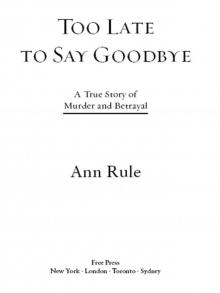 Too Late to Say Goodbye: A True Story of Murder and Betrayal
Too Late to Say Goodbye: A True Story of Murder and Betrayal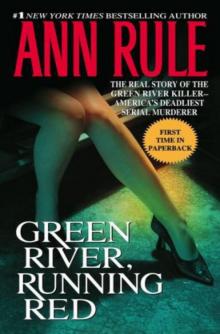 Green River, Running Red
Green River, Running Red Bitter Harvest
Bitter Harvest Dead by Sunset: Perfect Husband, Perfect Killer?
Dead by Sunset: Perfect Husband, Perfect Killer? Lust Killer
Lust Killer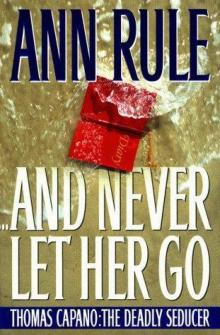 And Never Let Her Go: Thomas Capano: The Deadly Seducer
And Never Let Her Go: Thomas Capano: The Deadly Seducer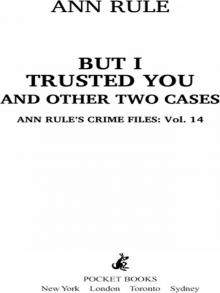 But I Trusted You and Other True Cases
But I Trusted You and Other True Cases Smoke, Mirrors, and Murder and Other True Cases
Smoke, Mirrors, and Murder and Other True Cases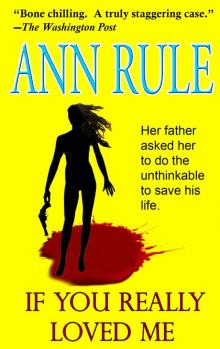 If You Really Loved Me
If You Really Loved Me Kiss Me, Kill Me and Other True Cases
Kiss Me, Kill Me and Other True Cases Fatal Friends, Deadly Neighbors and Other True Cases
Fatal Friends, Deadly Neighbors and Other True Cases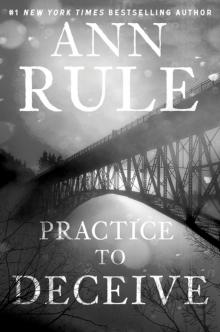 Practice to Deceive
Practice to Deceive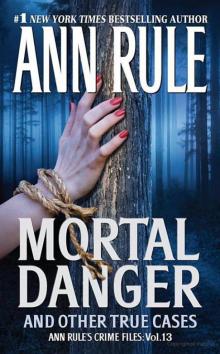 Mortal Danger and Other True Cases
Mortal Danger and Other True Cases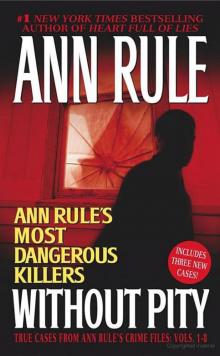 Without Pity: Ann Rule's Most Dangerous Killers
Without Pity: Ann Rule's Most Dangerous Killers Everything She Ever Wanted
Everything She Ever Wanted A Fever in the Heart and Other True Cases
A Fever in the Heart and Other True Cases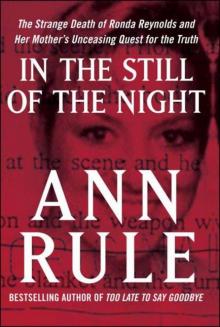 In the Still of the Night
In the Still of the Night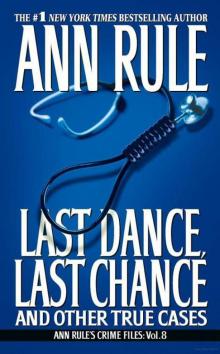 LAST DANCE, LAST CHANCE - and Other True Cases
LAST DANCE, LAST CHANCE - and Other True Cases A Rage to Kill
A Rage to Kill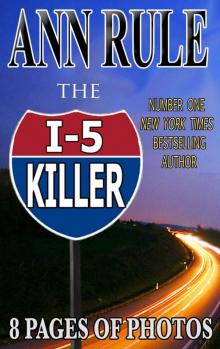 The I-5 Killer
The I-5 Killer The Stranger Beside Me
The Stranger Beside Me Everything She Ever Wanted: A True Story of Obsessive Love, Murder, and Betrayal
Everything She Ever Wanted: A True Story of Obsessive Love, Murder, and Betrayal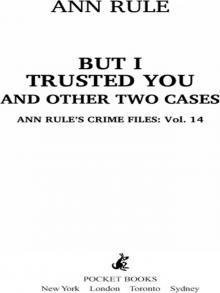 But I Trusted You
But I Trusted You Without Pity
Without Pity Kiss Me, Kill Me
Kiss Me, Kill Me Too Late to Say Goodbye
Too Late to Say Goodbye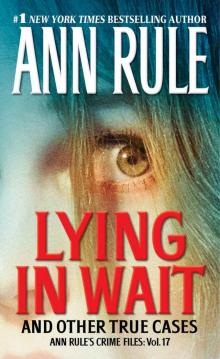 Lying in Wait
Lying in Wait Fatal Friends, Deadly Neighbors
Fatal Friends, Deadly Neighbors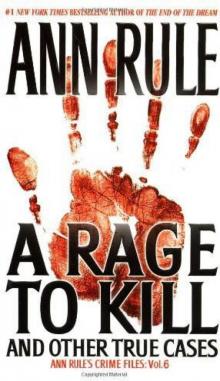 A Rage to Kill: And Other True Cases
A Rage to Kill: And Other True Cases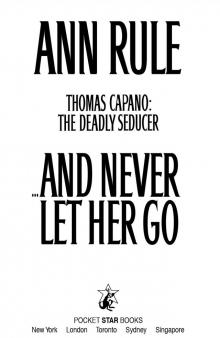 And Never Let Her Go
And Never Let Her Go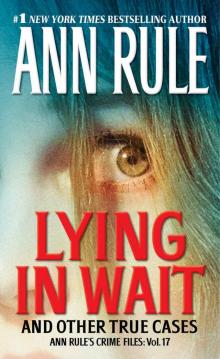 Lying in Wait Ann Rule's Crime Files Vol.17
Lying in Wait Ann Rule's Crime Files Vol.17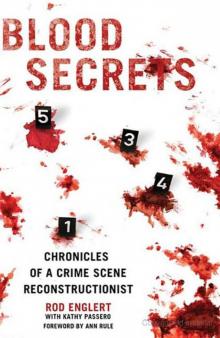 Blood Secrets: Chronicles of a Crime Scene Reconstructionist
Blood Secrets: Chronicles of a Crime Scene Reconstructionist No Regrets
No Regrets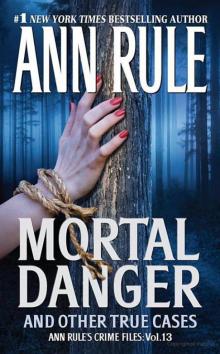 Mortal Danger
Mortal Danger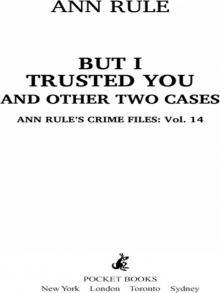 But I Trusted You: Ann Rule's Crime Files #14
But I Trusted You: Ann Rule's Crime Files #14 Empty Promises
Empty Promises Dead by Sunset
Dead by Sunset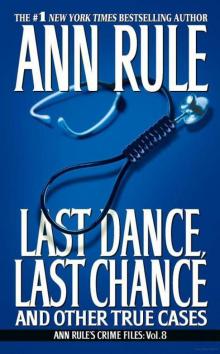 Last Dance, Last Chance
Last Dance, Last Chance Don't Look Behind You
Don't Look Behind You